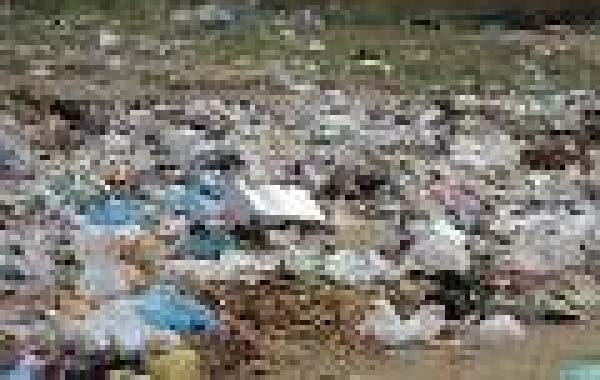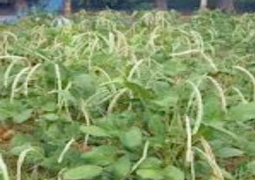
While there are many objections to the banning of plastic bags based solely on their convenience, the damage to the environment needs to be controlled.
There is no way to strictly limit the effects of plastic bags on the environment because there is no disposal method that will really help eliminate the problem.
While reusing them is the first step, most people either don’t or can’t base on store policies.
They are not durable enough to stand up to numerous trips to the store; so often the best that citizens can do is reuse them when following proper scooper laws.
The biggest problem with this is that once they have been soiled they end up in the trash, which then end up in the landfill or burned. Either solution is very poor for the environment.
Burning emits toxic gases that harm the atmosphere and increase the level of VOCs in the air while landfills hold them indefinitely as part of the plastic waste problem throughout the globe.
Even when citizens try to manage their plastic bag disposal wind plays a role in carrying them away as litter. This litter is not biodegradable and thus where it lands it tends to stay for long period of time.
A bag that is eventually ripped to shreds from high winds or other factors doesn’t disappear, but instead is spread in smaller amounts throughout the area.
This can cause more problems as these smaller pieces are carried away through storm drains and often end up in the waterways.
Plastic bag litter is often also the result of human laziness. The plastic bag might make for a good carry on to the beach for the day, but once all of the pretzels and chips are consumed an estimated one in three consumers simply allow the bag to disappear into the wind and waves.
With more than 500 billion and possibly as many as a trillion plastic bags in circulation annually, this can lead to a catastrophic littering problem.
Not only is littering unattractive, but it is also a very serious environmental hazard.
The effects of plastic bags in waterways
One of the greatest problems is that an estimated 300 million plastic bags end up in the Atlantic Ocean alone. These bags are very dangerous for sea life, especially those of the mammal variety.
Any hunting mammal can easily mistake the size, shape, and texture of the plastic bag for a meal and find its airway is cut off. Needless deaths from plastic bags are increasing every year.
Porpoises are the most common victim. Because they eat sea nettles and jelly fish they are the most likely to mistake the plastic bag for food.
If they survive the swallowing of the bag, it is unlikely that they are able to continue with normal digestion and thus eventually die a slow and painful death from toxicity or intestinal blockage.
The environmental balance of the waterways is being thrown off by the rate of plastic bags finding their way into the mouths and intestinal tracts of sea mammals.
As one species begins to die off at an abnormal rate, every other living organism in the waterway is impacted. There are either too many or too few and changes within the environment continue to kill off yet more organisms.
The effects of plastic bags on land
The indefinite period of time that it takes for the average plastic bag to breakdown can be literally hundreds of years. Every bag that ends up in the woodlands of the country threatens the natural progression of wildlife.
Because the breakdown rate is so slow, the chances that the bag will harmlessly go away are extremely slim. Throughout the world, plastic bags are responsible for suffocation deaths of woodland animals, as well as inhibiting soil nutrients.
The land litter that is made up of plastic bags has the potential to kill over and over again. It has been estimated that one bag has the potential to unintentionally kill one animal per every three months due to unintentional digestion or inhalation.
If you consider the number of littered plastic bags ranges from 1.5 million to 3 million depending on location, this equals a lot of ecosystem sustaining lives lost.
Without the balance of the ecosystem, food sources dry up and starvation occurs. With an increase in plastic bag use throughout the world, the eventual effects could be literally devastating even to the human population.
Recycling plastic bags
While it’s a noble thought to place the plastic bags in the recycling bin every week, studies have proven that there are very few plants that actually recycle them.
Most municipalities either burn them or send them off to the landfill after sorting. This is because it can be expensive to recycle this type of plastic. It doesn’t melt down easily and is often not realistically able to be reused from its original form without considerable overhaul to the facility.
The premise of recycling these bags is nice. Yet funding for the upgrades just has not happened and thus less than 1 per cent of all bags sent to recycling plants worldwide end up in the recycling project. Most are left to become a pollution problem in one way or another.
Alternatives to plastic bags
There are always alternatives to plastic bags and the search for more alternatives continues. Paper bags are a possible option but they also take their toll on the environment.
The use of trees to increase the production of paper products combined with the increased energy that is required to make paper bags will also have a negative environmental effect.
Reusable plastic bags are being introduced to regions that want to outlaw the plastic bag altogether. These are stronger and more durable and can be used for three to five trips to the store.
Of course, the reusable cloth bag is fast becoming a favourite among environmental supporters. While thus far, no bag is without its issues, these are the bags that are currently recommended for use to help protect environmental concerns.
Read Other Articles In Article (Archive)



